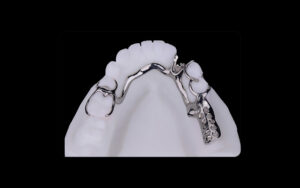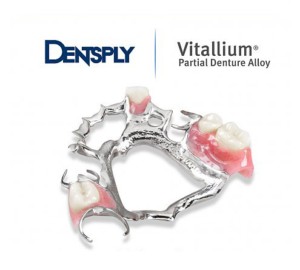What Materials Are Used in Dental Metal Frameworks?
Time:2021-11-25
Dental metal frameworks are critical components in various dental prosthetics, including crowns, bridges, and dentures. These frameworks provide essential support and durability, allowing restorations to withstand the forces of chewing and other oral activities. The choice of materials for dental metal frameworks significantly influences their performance, biocompatibility, and aesthetic outcomes. This article will explore the various materials commonly used in dental metal frameworks, discussing their properties, advantages, and applications in dentistry.
1. Introduction to Dental Metal Frameworks
Dental metal frameworks serve as the structural base for prosthetic devices. They are designed to support restorative materials, which may include ceramics, resin, or acrylics. The framework’s design must account for factors such as occlusion, aesthetic requirements, and the unique anatomy of the patient’s mouth. Selecting the appropriate material for these frameworks is essential to achieve the desired strength, longevity, and aesthetic quality.

dental metal framework


dental metal framework
2. Common Materials Used in Dental Metal Frameworks
2.1. Stainless Steel
Stainless steel is one of the most commonly used materials in dental metal frameworks. Known for its strength, corrosion resistance, and cost-effectiveness, stainless steel is ideal for various applications in dentistry.
Composition: Stainless steel is an alloy primarily composed of iron, with significant amounts of chromium and nickel. The presence of chromium provides corrosion resistance, while nickel enhances strength and ductility.
Advantages:
Strength: Stainless steel has a high tensile strength, making it suitable for load-bearing applications.
Corrosion Resistance: The chromium content protects the framework from corrosion in the moist oral environment.
Ease of Fabrication: Stainless steel can be easily shaped and adjusted to fit individual patient needs.
Applications: Stainless steel is frequently used for temporary crowns, orthodontic appliances, and as frameworks for removable dentures.
2.2. Cobalt-Chromium Alloys
Cobalt-chromium (Co-Cr) alloys are another popular choice for dental metal frameworks, particularly in fixed partial dentures and implant-supported restorations.
Composition: Cobalt-chromium alloys typically consist of cobalt, chromium, and other elements such as molybdenum and nickel. The high cobalt content provides excellent mechanical properties.
Advantages:
Biocompatibility: Co-Cr alloys exhibit good biocompatibility, minimizing the risk of allergic reactions.
High Strength: These alloys are known for their high tensile strength and resistance to deformation.
Corrosion Resistance: Co-Cr alloys demonstrate excellent resistance to corrosion and oxidation.
Applications: Commonly used in frameworks for fixed partial dentures, crowns, and implant-supported restorations, cobalt-chromium alloys are favored for their strength and longevity.

2.3. Titanium and Titanium Alloys
Titanium is increasingly being used in dental metal frameworks due to its exceptional biocompatibility and mechanical properties.
Composition: Pure titanium (grade 4) and titanium alloys (such as Ti-6Al-4V) are commonly used in dental applications. Titanium alloys typically contain aluminum and vanadium, enhancing strength and fatigue resistance.
Advantages:
Biocompatibility: Titanium is highly biocompatible, making it ideal for use in the oral cavity.
Lightweight: Titanium frameworks are lightweight, which can improve patient comfort.
Corrosion Resistance: Titanium exhibits excellent resistance to corrosion, even in the presence of saliva and food particles.
Applications: Titanium and its alloys are primarily used in implant-supported restorations and frameworks for dental implants due to their strength and compatibility with bone.
2.4. Noble Metal Alloys
Noble metal alloys, including gold, platinum, and palladium, are traditional materials used in dental restorations, particularly in high-quality, aesthetic applications.
Composition: Noble metal alloys often contain a mixture of gold, palladium, and other precious metals. These metals are resistant to tarnish and corrosion.
Advantages:
Aesthetic Quality: Noble metal alloys provide excellent aesthetic results, as they can be polished to a high shine.
Corrosion Resistance: These alloys resist corrosion and oxidation, ensuring longevity.
Biocompatibility: Noble metals are well-tolerated by the body, minimizing allergic reactions.
Applications: Noble metal alloys are often used in anterior restorations, crowns, and bridges where aesthetics are a primary concern.
2.5. Base Metal Alloys
Base metal alloys, which include nickel-chromium (Ni-Cr) and cobalt-chromium (Co-Cr) alloys, are also widely used in dental frameworks due to their favorable mechanical properties and cost-effectiveness.
Composition: Base metal alloys contain a higher percentage of base metals, such as nickel and cobalt, and lower amounts of precious metals.
Advantages:
Cost-Effectiveness: Base metal alloys are more affordable than noble metals while still providing strength and durability.
Mechanical Properties: They offer good tensile strength and are resistant to wear and deformation.
Applications: Base metal alloys are commonly used in removable partial dentures, fixed partial dentures, and frameworks where aesthetic requirements are less critical.
3. Factors Influencing Material Selection
When choosing materials for dental metal frameworks, several factors must be considered:
3.1. Biocompatibility
The material used must be biocompatible to prevent adverse reactions in the oral cavity. Dentists often prefer materials that have a low potential for allergenic responses, especially when treating sensitive patients.
3.2. Strength and Durability
The mechanical properties of the material are crucial for the framework’s performance. Materials must withstand the forces of chewing and resist wear over time.
3.3. Aesthetic Requirements
In cases where aesthetics are a primary concern, the material must provide a natural appearance. This is particularly important for restorations in the anterior region of the mouth.
3.4. Cost
The cost of materials can significantly influence the choice of dental metal frameworks. While noble metals offer superior aesthetic and mechanical properties, they are often more expensive than base metals.
3.5. Fabrication Techniques
The ease of fabrication and the techniques available in a dental laboratory can also impact material selection. Some materials may be more amenable to specific manufacturing processes, such as casting or milling.
4. Conclusion
In summary, the choice of materials for dental metal frameworks plays a vital role in the success of dental restorations. Stainless steel, cobalt-chromium alloys, titanium, noble metals, and base metal alloys each offer unique properties and advantages. Understanding these materials’ characteristics, along with factors influencing their selection, is essential for dental professionals to ensure optimal outcomes for their patients. As dental technology continues to advance, the development of new materials and fabrication techniques will further enhance the quality and performance of dental metal frameworks, ultimately improving patient satisfaction and clinical success.

